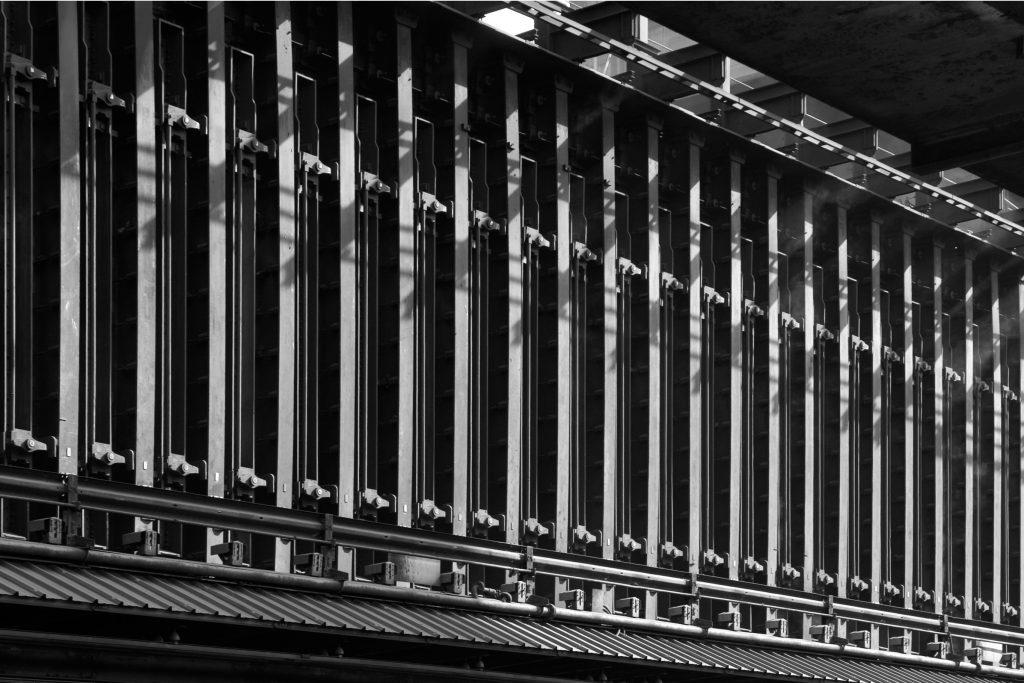-
Coking plant
Coal is needed when producing liquid hot metal in the blast furnace. However, we cannot utilise coal directly in the blast furnace as it contains a lot of harmful and unnecessary by-products. Coal is furthermore not strong enough to carry the blast furnace load. This is why we start by converting our coal into metallurgical coke.
How does this work?

The coal is heated to 1.250° C in the coke ovens. Since these ovens are oxygen-free, the coal does not actually burn. This process is referred to as ‘dry distillation’. It takes about 18 hours to convert 35 tonnes of coal into 25 tonnes of metallurgical coke.
The coke cake is unloaded from the oven by a pusher machine, which is equipped with a pusher arm. A coke-guide car guides the coke into the quenching car. The coke is then transferred to the coke quenching tower, where it is quenched with water. Afterwards, the coke is unloaded at the coke wharf, where the remaining water evaporates.
A reclaimer then feeds the coke from the wharf to a conveyor belt, which transfers the coke to the crushing and screening station.
During the distillation process, a large amount of gas and smoke is generated, which –after purification– creates coke oven gas and other valuable by-products, such as tar, sulphur, ammonia, naphthalene and benzole.
Both the production of metallurgical coke as well as the purification of gas, is executed completely automated.
The metallurgical coke is utilised as fuel in our blast furnace. It furthermore plays an important part in the chemical processes taking place in the blast furnace. The coke oven gas is fully utilised as fuel internally.
-
Production process
Before
Afterwards


